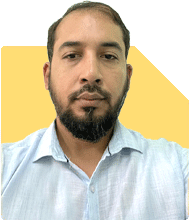Should I leave VIT for NIT Nagaland Mechanical Engg?
Aasif Ahmed Khan | Answer |Ask -Follow
Tech Career Expert - Answered on Aug 10, 2024
Aasif is passionate about guiding students and aspiring engineers as they aim to choose the right educational paths, including courses and colleges.
He holds a bachelor's degree in mechanical engineering from the Indore Institute of Science & Technology in Indore and is currently pursuing a master's degree in thermal and fluid engineering at the Indian Institute of Technology, Mumbai.... more

Hello Sir, My daughter has got Mechanical Engg. at NIT Nagaland in CSAB Round 1. She has already joined BTech Electronics & Computer Engg at VIT, Chennai. Is it advisable to leave VIT and join NIT Nagaland? How good are the faculty & placements at Nagaland? Is it safe there? We are in a dilemma to let go of the NIT tag. Please advise. Thank you Sir
Majorly you have to consider factors like faculty expertise, infrastructure, exposure, and peer learning. You have to discuss with your daughter her preferences, career goals, and comfort level.
You may proceed for NIT Nagaland, it has a Training and Placement Cell that actively works on industry collaborations and skill development for students. While it’s a relatively new institute, it has made progress in terms of placements. Last year, about 70% of the first batch students received placements in reputed companies like National Instruments, Polaris, Verizon, Aricent, and IBM.
You may like to see similar questions and answers below
Nayagam P P |10849 Answers |Ask -Follow
Career Counsellor - Answered on Jun 22, 2025
Ulhas Joshi |280 Answers |Ask -Follow
Mutual Fund Expert - Answered on Dec 05, 2025
Dr Dipankar Dutta |1835 Answers |Ask -Follow
Tech Careers and Skill Development Expert - Answered on Dec 04, 2025
Ravi Mittal |676 Answers |Ask -Follow
Dating, Relationships Expert - Answered on Dec 04, 2025
Anu Krishna |1745 Answers |Ask -Follow
Relationships Expert, Mind Coach - Answered on Dec 04, 2025
Anu Krishna |1745 Answers |Ask -Follow
Relationships Expert, Mind Coach - Answered on Dec 04, 2025
Mayank Chandel |2562 Answers |Ask -Follow
IIT-JEE, NEET-UG, SAT, CLAT, CA, CS Exam Expert - Answered on Dec 04, 2025
Mayank Chandel |2562 Answers |Ask -Follow
IIT-JEE, NEET-UG, SAT, CLAT, CA, CS Exam Expert - Answered on Dec 04, 2025
Mayank Chandel |2562 Answers |Ask -Follow
IIT-JEE, NEET-UG, SAT, CLAT, CA, CS Exam Expert - Answered on Dec 04, 2025
Mayank Chandel |2562 Answers |Ask -Follow
IIT-JEE, NEET-UG, SAT, CLAT, CA, CS Exam Expert - Answered on Dec 04, 2025
Mayank Chandel |2562 Answers |Ask -Follow
IIT-JEE, NEET-UG, SAT, CLAT, CA, CS Exam Expert - Answered on Dec 04, 2025























